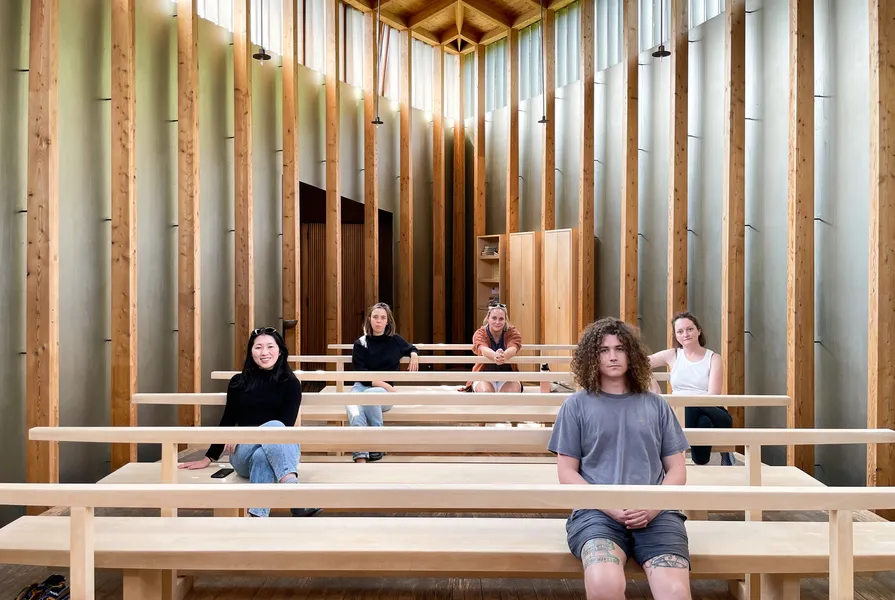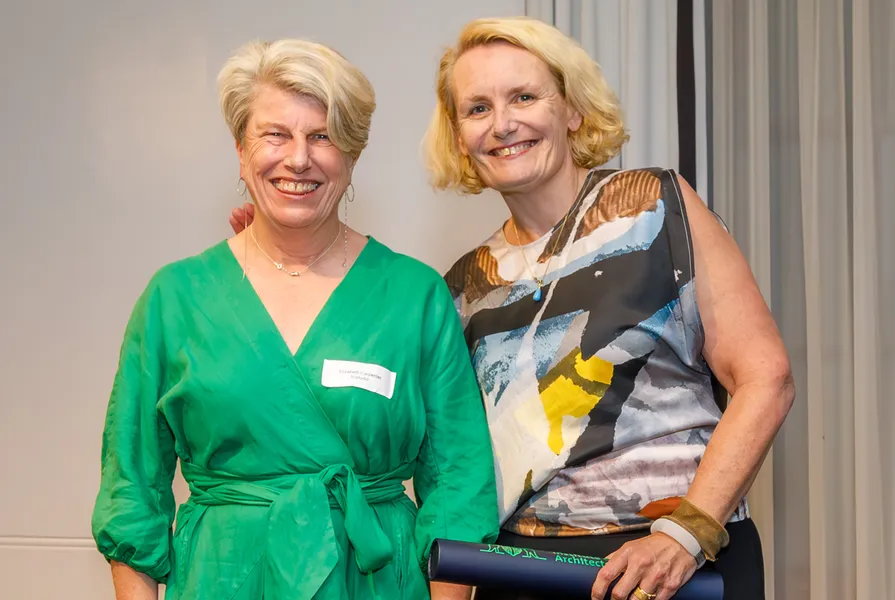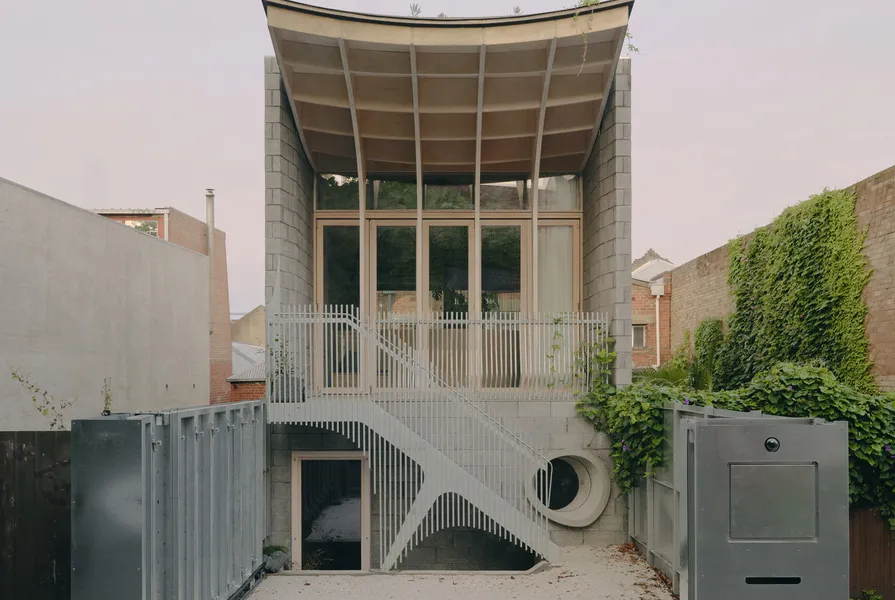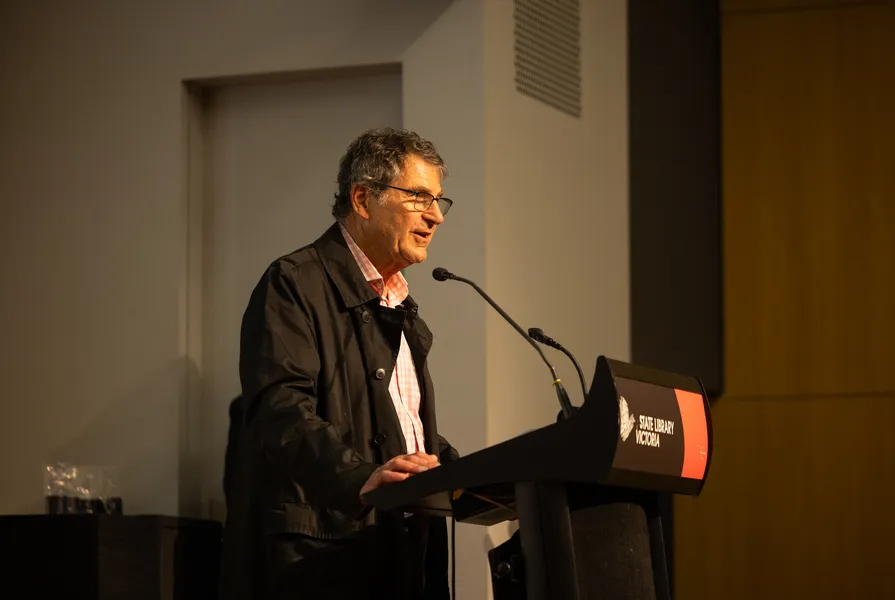- by architectureau
- 28 Nov 2024
From regional romanticism to reconciliation: 2023 Dulux Study Tour, Vals, Zürich, Venice
The final leg of the Australian Institute of Architects’ 2023 Dulux Study Tour was like an architectural amazing race from Zürich to the Alpine Rhine Valley, back to Zürich, ending at the Venice Architecture Biennale.
- by architectureau
- 22 Jun 2023
- in architects

The tour bus, carrying five of Australia's best emerging architects, wound its way past glistening lakes and rivers with the limestone peaks over the horizon. By this point of the tour, their architectural cups were full, and a day of Alpine air, fields of wildflowers and refreshing Valser water was a welcome interlude.
The final destination of the day was Peter Zumthor's Therme in Vals, about two hours' drive from Zurich, with several pitstops along the way to tiny villages where revered Swiss architects Peter Zumthor and Valerio Olgiati have made their mark among the untouched mountain chalets.
"I just kept thinking at every project, I wonder what the locals think of this?" Sarah Lebner said. "Because most of the projects that we saw that day, even though they were an interpretation of traditional form, they were quite confrontingly different."
"There was so much regional tectonics," Lebner continued, "and such a maintained tradition in the materials they used and how they built."
"I really like the animal structures in the landscape," said Bradley Kerr. "They were like little boulders sitting down the hill, and they aged like a boulder as well."
Tiffany Liew observed, "There was more texture in the regions, like the landscape, the shape of the hills and the mountains, and the textured materials. It was a complete contrast and how rigid the city felt."
"The only building that we saw that didn't have a grid on the facade was the social housing project that we went into, and it had a bit of a disrupted grid," she continued.
Haus G, designed by Pool Architekten, is one of 13 apartment blocks in the Hunziker Areal precinct - a flagship project for the "Mehr als Wohen" (More than Living) housing cooperative, founded in 2007. The masterplan by Duplex Architekten and Futurafrosch set out a number of "rules" for the architects of the 13 buildings, principally that each architect was assigned three buildings to design - a "couple" neighbouring each other, and a "satellite" - and the articulation of the buildings subtracted the extruded volume of the buildings' footprints.
While the group of on site, a resident spontaneously - and proudly - invited the group into her home, which, even to the architects' surprise, had remained remarkably unchanged over the past decade.
"I really like what Pool Architekten said about creating possibilities for the inhabitants and how their designs do that both in the urban space around the buildings and the dwellings themselves," Brisbane said.
Finally, the study tour arrived at the Venice Architecture Biennale in the middle of National Reconciliation Week in Australia - the timing made more poignant with tours of the Australian and Canadian exhibitions, which each examined their respective countries' relationships with First Peoples in their own ways.
Australia's Unsettling Queenstown explored the legacy of colonialism via a process of "demapping" to reveal erased Indigenous inhabitations and histories, while Canada's Not for Sale addressed issues of housing alienation for its Indigenous peoples.
"It was interesting to see them next to each other - the way they were both talking about working with community," said Ellen Buttrose. "But I found the Australian exhibition to be a little bit hierarchical, in comparison to what was happening in the Canadian exhibition. Literally what they were talking about was completely reflected in their occupation of [their pavilion]. The reconfiguration and the ad hoc nature of it and the fact that it didn't have to be an object."
Bradley Kerr (Quandamooka) found the Australian exhibition lacked context, particularly for international and non-architect audiences.
"It's really hard to have these conversations without a general understanding of Australia," he said. "We can't present this type of information without understanding first very complex ideas like Country. If you ask any First Nations person what Country is, there's a familiar response like we might all have some kind of understanding that Country is family, Country is kin, there's a responsibility to care for Country, look after Country, there's all these things. But it's a very personal relationship.
"There's also the context of understanding that there are hundreds of Countries within Australia so the conversation isn't about one homogenous group with one culture and one language, and one relationship to Country. It's far more of a complex relationship, and before you can get into some of the complexities of the exhibition is talking about, you need to have an understanding of that kind of context."
Kerr also observed that the exhibitions reflected the sociopolitical undercurrents in their respective countries. "We're in the throes of a political debate over whether or not the First Nations Peoples in Australia have a constitutional right to have a say over matters that impact them directly. Politically we're going hear a lot of horribly unjust and factually inaccurate things, just to establish a position where we can then move to discuss the other parts of the Uluru Statement from the Heart and a treaty.
"And while I'm not super familiar with Canada's history and their situation is not perfect, they've had a treaty since 1982.
"We're just trying to define what architecture of Country is - what does that look like, feel like, smell like, and how does that change for each Country in Australia. We're still trying to discover that and combining Indigenous ways of being, knowing, seeing and relating to things with colonial ways."
Linda Cheng travelled with the 2023 Dulux Study Tour. Follow #2023DuluxStudyTour on social media and the blog.
- by foxnews
- descember 09, 2016
Mom's message in a bottle found by her own daughter 26 years later
A fourth grader went on a school trip when someone found a message in a bottle containing a letter that was written by her mom 26 years ago. The message was tossed into the Great Lakes.
read more





